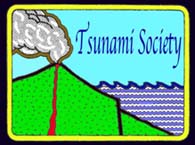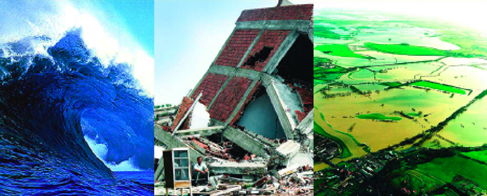FRENCH TSUNAMI WARNING CENTER FOR THE MEDITERRANEAN AND THE NORTHEAST ATLANTIC- CENALT
P. Roudil, F. Schindelé, R. Bossu, N. Alabrune, P. Arnoul, P. Duperray, A. Gailler, J. Guilbert,
H. Hébert, A. Loevenbruck
Commissariat à l’énergie atomique et aux énergies alternatives, CEA/DIF/DASE, Bruyères-le-Châtel, FRANCE
ABSTRACT
CENALT (CENtre d’ALerte aux Tsunamis) is responsible for the French National Tsunami Warning Centre (NTWC). The CENALT is established in the framework of the Unesco/IOC/ICG/NEAMTWS. Its objective is to transmit a warning message in less than fifteen minutes for any events that could trigger a tsunami in the Western Mediterranean Sea and the North-Eastern Atlantic Ocean. The data collected from French installations and from institutions of European and North African countries is processed with software that permits early epicenter location of seismic events and measurements of expected tsunami impacts on the shore. On-duty analysts revise interactively all the generated information and use references of historical tsunami and earthquake databases - as well as computed tsunami scenarios – in order to disseminate the more comprehensive message possible.
Keywords: Tsunami, warning, centre, France, Mediterranean, Atlantic
Vol. 32, No. 1, pp 1- 8 (2013)
_______________________
SEVERAL TSUNAMI SCENARIOS AT THE NORTH SEA AND THEIR CONSEQUENCES AT THE GERMAN BIGHT
Silvia Chacón-Barrantes - Departamento de Física, Universidad Nacional de Costa Rica, Heredia, COSTA RICA (Now at the Coastal Research Laboratory, University of Kiel, GERMANY)
Rangaswami Narayanan - Formerly, Reader, Department of Civil and Structural Engineering, University of Manchester, Manchester, UNITED KINGDOM
Roberto Mayerle - Coastal Research Laboratory, University of Kiel, GERMANY
ABSTRACT
Tsunamis occurred in the past at the North Sea, but not frequently. There are historical and geological records of several tsunamis: the Storegga tsunami caused sediment deposits in Scotland 8,000 years ago and records of at least six earthquake-generated tsunamis exist from 842 to 1761 AC. The highest tsunami height witnessed at the German Bight is comparable to the maximum storm surge recorded and could thus cause similar or higher damage. However, there is little research on tsunami modeling in the North Sea. Here, we performed ten numerical experiments imposing N-waves at the open boundaries of a North Sea model system to study the potential consequences of tsunamis for the German Bight. One of the experiments simulated the second Storegga slide tsunami, seven more explored the influence of the incidence direction of the tsunami when entering the North Sea domain, and the other two explored the influence of tides on tsunami heights. We found that the German Bight is not exempt from tsunami risk. The main impact was from waves entering the North Sea from the north, even for tsunamis with sources south of the North Sea. Waves entering from the English Channel were attenuated after crossing the Dover strait. For some scenarios, the tsunami energy got focused directly at the Frisian Islands. The tidal phase had a strong influence on tsunami heights, although in this study the highest heights were obtained in the absence of tides. The duration of tsunamis is significantly smaller than that of storm surges, even though their flow velocities were found to be comparable or larger, thus increasing their possible damage. Therefore, tsunamis should not be dismissed as a threat at the North Sea basin and particularly at the German Bight.
Keywords: Tsunami numerical modeling, 1755 Lisbon tsunami, 1929 Grand Banks tsunami, 1858 North Sea tsunami, submarine slide tsunami.
Vol. 32, No. 1, pp 8-29 (2013)
_______________________
ASSESSMENT OF TSUNAMI GENERATION POTENTIAL THROUGH RAPID ANALYSIS OF SEISMIC PARAMETERS - Case Study: Comparison of the Sumatra Earthquakes of 6 April and 25 October 2010
Madlazim - Physics Department, Faculty of Mathematics and Sciences, Surabaya State University (UNESA) Jl. Ketintang, Surabaya, INDONESIA
ABSTRACT
The purpose of the research was to estimate P-wave rupture durations (Tdur), dominant periods (Td) and rupture durations greater than 50 seconds (T50Ex) for two large, shallow earthquakes, which occurred off the coast of Sumatra on 6 April and 25 October 2010. Although both earthquakes had similar parameters of magnitude and focal depth, the 25 October event (Mw=7.8) generated a tsunami while the 6 April event (Mw=7.8) did not. Analysis of the above stated parameters helped understand the mechanisms of tsunami generation of these two earthquakes. Measurements from vertical component broadband P-wave quake velocity records and determination of the above stated parameters could provide a direct procedure for assessing rapidly the potential for tsunami generation. The results of the present study and the analysis of the seismic parameters helped explain why one event generated a tsunami, while the other one did not.
Keywords: P-wave; rupture duration; dominant period; rupture duration greater than 50 seconds; direct procedure.
Vol. 32, No. 1, page 29 (2013)
________________________
USING FOURIER TRANSFORM INFRARED (FTIR) TO CHARACTERIZE TSUNAMI DEPOSITS IN NEAR-SHORE AND COASTAL WATERS OF THAILAND
S. Pongpiachan - NIDA Center for Research & Development of Disaster Prevention & Management, School of Social and Environmental Development, National Institute of Development Administration (NIDA), Bangkok, THAILAND
K. Thumanu - Synchrotron Light Research Institute (Public Organization), Ministry of Science and Technology, THAILAND
W. Na Phatthalung - Synchrotron Light Research Institute (Public Organization), Ministry of Science and Technology, THAILAND
D. Tipmanee - International Postgraduate Program in Environmental Management, Graduate School, Chulalongkorn University, Bangkok, THAILAND
Also, Center of Excellence for Environmental and Hazardous Waste Management (EHWM), Chulalongkorn University, Bangkok, THAILAND
P. Kanchai - NIDA Center for Research & Development of Disaster Prevention & Management, School of Social and Environmental Development, National Institute of Development Administration (NIDA), Bangkok, THAILAND
P. Feldens - 5GEOMAR Helmholtz Centre for Ocean Research Kiel, GERMANY
K. Schwarzer - Institute of Geosciences Sedimentology, Coastal and Continental Shelf Research, Christian Albrechts University of Kiel, Kiel, GERMANY
ABTRACT
Understanding the tsunami cycle requires a simple method for identification of tsunami backwash deposits. This study investigates Fourier transform infrared (FTIR) spectroscopy followed by careful analysis of variance (ANOVA), Gaussian distribution, hierarchical cluster analysis (HCA) and principal component analysis (PCA) for the discrimination of typical marine sediments and tsunami backwash deposits. In order to test the suitability of FTIR spectra as innovative methods for classifications of tsunami deposits, typical marine sediments and terrestrial soils were classified into three zones, namely zone-1 (i.e. typical marine sediments), zone-2 (i.e. including tsunami backwash deposits) and zone-3 (i.e. coastal terrestrial soils). HCA was performed to group the spectra according to their spectral similarity in a dendrogram and successfully separate FTIR spectra of all three sampling zones into two main clusters with five sub-clusters. The simplicifolious (i.e. single-leafed) type of dendrogram was observed with the strong dissimilarity of terrestrial components in subcluster-5. Graphical displays of PC1 vs PC2 highlight the prominent features of zone-1, which is explicitly different from those of zone-2 and zone-3. The acceptable discrimination of typical marine sediments and tsunami backwash deposits, even six years after the tsunami on Boxing Day 2004, dramatically demonstrates the potential of the method for the identification of paleotsunami.
Keywords: Tsunami Deposits, Fourier Transform Infrared Spectroscopy (FTIR), Analysis of Variance, Hierarchical Cluster Analysis, Principal Component Analysis, Andaman Sea
Vol. 32, No. 1, pp 39 - 57 (2013)
-------------------------------------------------------------------------------------------------------------------------------------------




